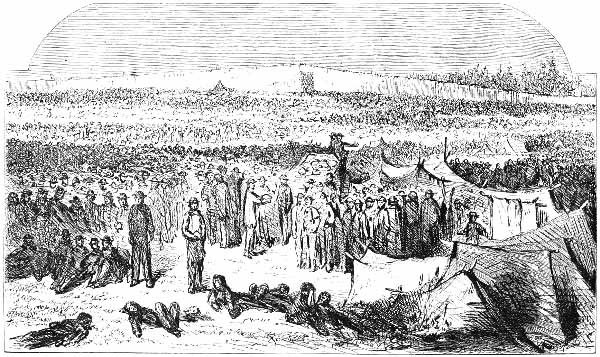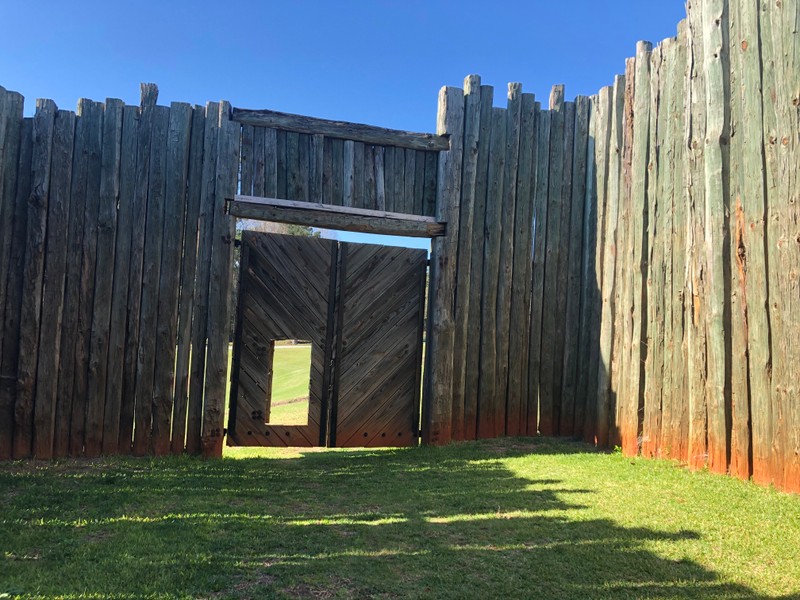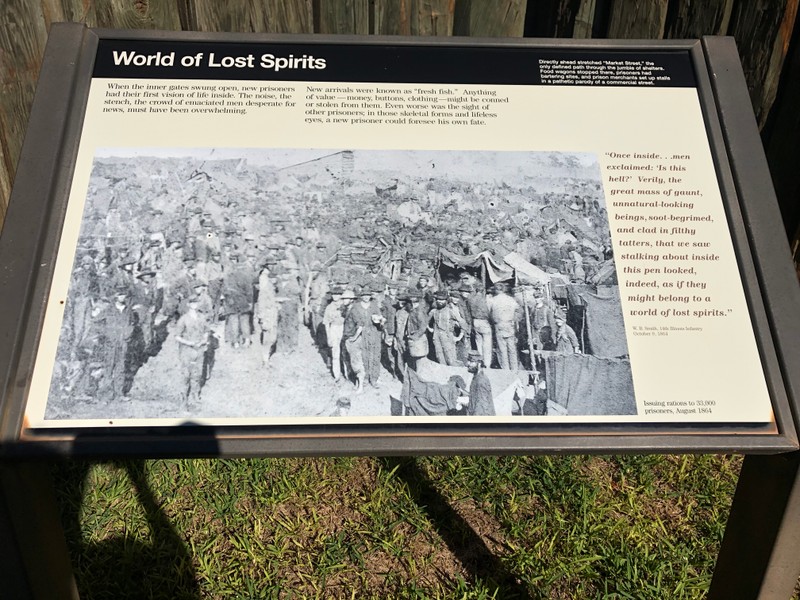The North Gate
Introduction
Text-to-speech Audio
Images
Plan of Prison grounds, Andersonville, Measured by Dr. Hamlin

View of the Stockade as the Rebels Left It

View from the main gate.

North Gate Reconstruction

National Park Service sign describing prisoners' entry

Backstory and Context
Author-Uploaded Audio
A description of conditions inside Andersonville and arrival at the camp. "The Civil War: A Film By Ken Burns." Arlington, Va.: WETA, 2002. Web. https://youtu.be/4P8i1EvTKgIClip accessed December 20, 2020. 3:41.
Text-to-speech Audio
Prisoners entering Andersonville typically entered through the North Gate after marching downhill from the train station in the village. Over 45,000 United States soldiers and civilians entered through this gate in the stockade as prisoners of war.[1] Two sets of doors with up to 80 guards eliminated any possibility of escape. The reconstruction of the gate displays the double doors, along with the imposing stockade walls that would have greeted soldiers as they entered the camp.
Memoirs of prisoners at Andersonville recall the foreboding gates as a sign of hard times to come. One remembered the imposing stockade as:
“made by placing logs in the ground and forming a fence eighteen feet high. Inside of the main fence was a line of posts set twelve feet from the stockade proper, and joined together with slates about as wide as the hand, thus forming a second fence four feet high which ran parallel to the stockade and all around the pen….The big gates were now swung back and we marched in. The old prisoners crowded around us and were eager to find out what was going on on the outside.”[2]
Another soldier who wrote down his memories of imprisonment at Andersonville many years after the war was over remembered:
“From the headquarters [of Capt. Wirz] to the north gate was a short quarter of a mile. As the gates swung on their heavy hinges, they looked like the jaws of some huge monster opening to gather us in…The motto, “All who enter here leave hope behind” might very properly have been placed over this old north gate.”[3]
After entering, guards divided prisoners into detachments, squads and messes. These groups organized the daily roll call within the prison. Guards also relieved prisoners of any items of value such as watches, jewelry, or money. Confederate guards seized all valuable items they could, unless prisoners could hide smaller items within their remaining belongings.[4] Most often, soldiers entered with only a few meager belongings- the clothes they wore upon arrival, a soldier’s blanket, or perhaps a canteen.
Sources
[1] “North Gate Reconstruction,” Andersonville Prison Site Walking Tour Brochure, National Park Service, accessed November 14, 2020.
[2] William N. Tyler, “The Dispatch Carrier and Memoirs of Andersonville Prison,” 11-12.
[3] William Franklin Lyon, In and Out of Andersonville Prison (Detroit, Michigan: Geo. Harland Co., Publishers, 1905), 44. HathiTrust, accessed December 15, 2020. https://babel.hathitrust.org/cgi/pt?id=hvd.32044024496366&view=1up&seq=9
[4] “North Gate Reconstruction,” Andersonville Prison Site Walking Tour Brochure, National Park Service, accessed November 14, 2020.
Augustus C. Hamlin, Martyria, or, Andersonville Prison (Boston: Lee and Shepard, 1866), 19.
Augustus C. Hamlin, Martyria, or, Andersonville Prison (Boston: Lee and Shepard, 1866), 19.
Augustus C. Hamlin, Martyria, or, Andersonville Prison (Boston: Lee and Shepard, 1866)
Personal Photograph, Erin Del Giudice November 14, 2020
Personal Photograph, Erin Del Giudice November 14, 2020.
